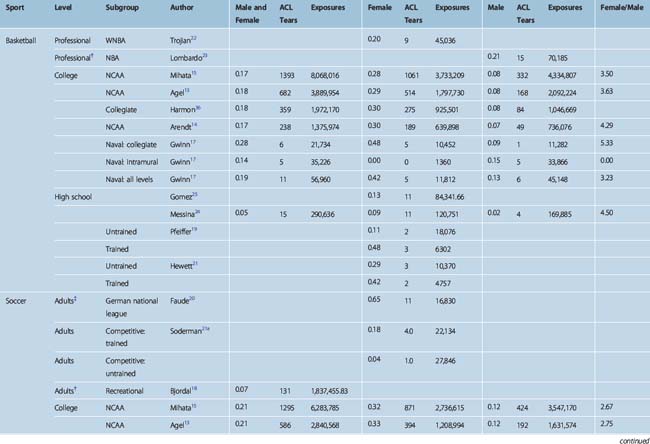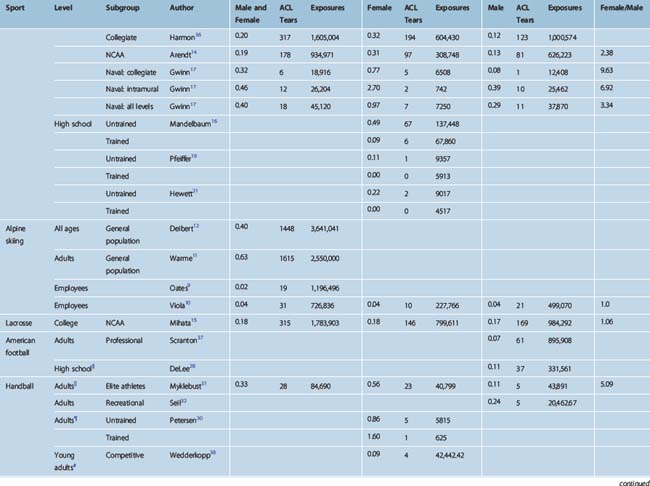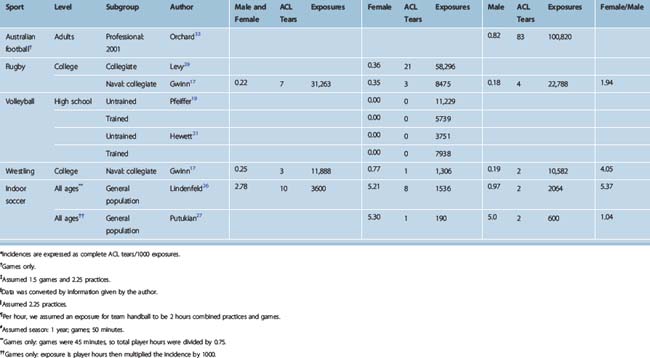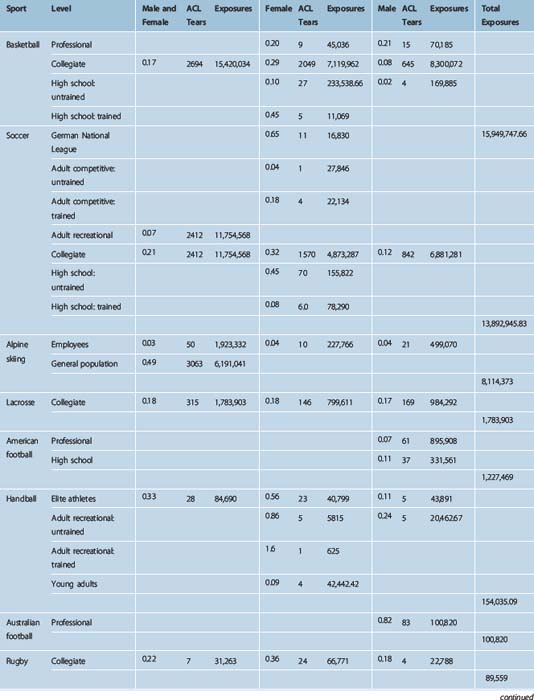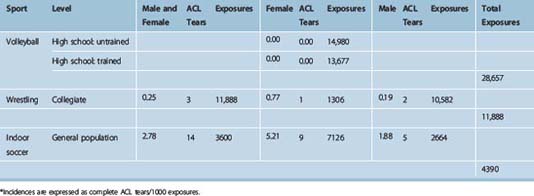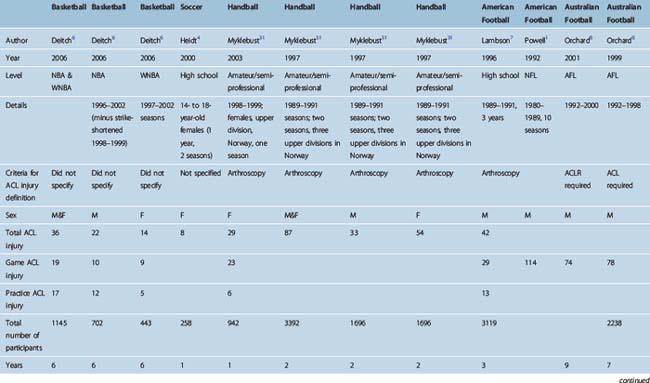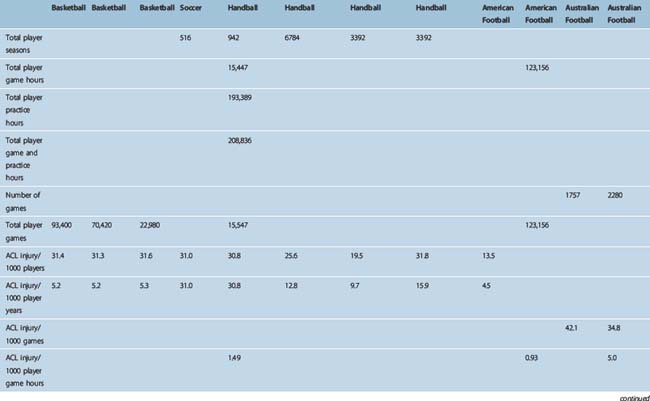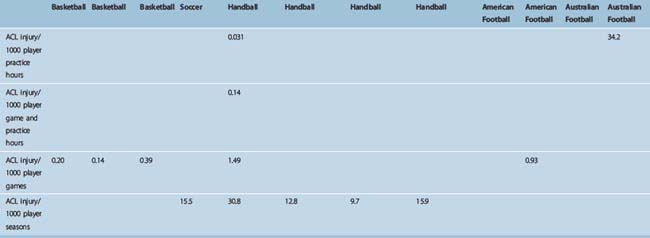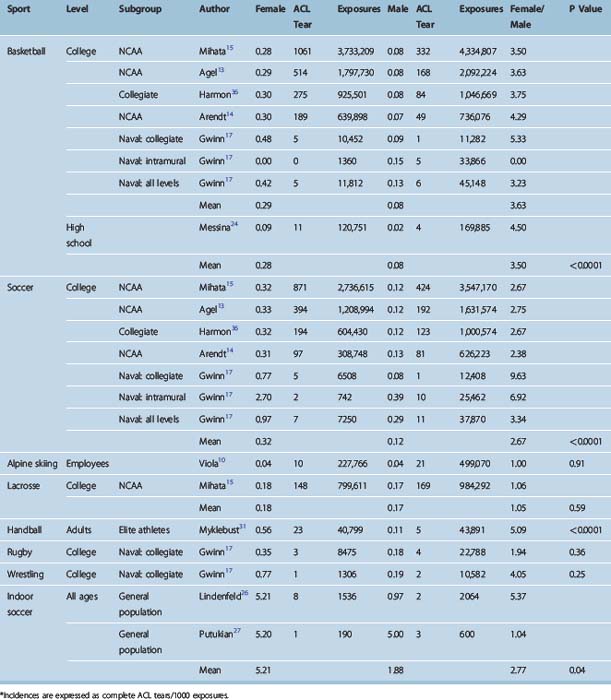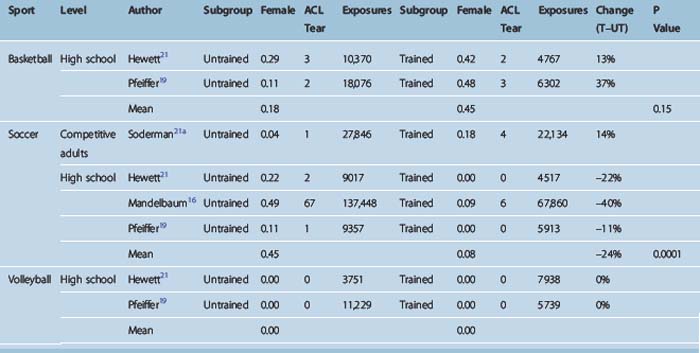Chapter 4 The Incidence of Anterior Cruciate Ligament Injury as a Function of Gender, Sport, and Injury-Reduction Programs
Methods
A computerized search of all papers in the peer-reviewed literature that had a possibility of dealing with the incidence of ACL tears was performed using a variety of indexing terms. Searches were then carried out by individual sports. This produced 793 articles that had some relation to knee or ACL injuries. These articles were reviewed, and bibliographies were cross-referenced for other papers, which were also reviewed for the purpose of identifying studies that had actual numerical incidences of complete ACL tears; this eliminated the overwhelming majority of papers. However, 33 papers were found that did have such quantitative data, and they form the basis for this chapter. Of these 33 papers, 25 had data that either used, or could be converted into, the preferred ACL injury incidence reporting method, namely: “ACL tears/1000 exposures.” An exposure is defined as either a practice or a game. These studies are listed in Table 4-1. They are divided by sport and then subdivided by level of competition, gender, and whether an ACL injury-reduction training program had been applied. The ratio of injury of females versus males is also listed for studies in which there were cohorts for both genders. These data form the basis for the analyses present in this chapter.
Table 4-2 aggregates like subgroups from Table 4-1 and provides mean injury rates weighted according to the number of exposures. Table 4-3 lists the remaining studies, which use methods other than “tears/1000 exposures”1–8. Table 4-4 aggregates the like populations from studies that compared incidences by gender. Table 4-5 lists all the studies that involved training regimens designed to reduce ACL tear incidence.
Data Conversions
A number of studies report their incidence by dividing the number of ACL tears by hours of participation instead of practices. In these studies the hourly incidence was therefore used to calculate an incidence per 1000 exposures by converting hours to practices or games and adjusting the incidence accordingly. Doing so allowed these series to be used in the comparative analysis with the other studies, which used the tear per exposure methodology. Without this method, a large number of useful studies would have been lost from the analysis. If an exact practice length was not listed, we assumed a practice length of 2.25 hours. In the study by DeLee,28 the data were presented in tears per hour, but exact data were given on number of practices and games and their lengths, so the data could be directly transformed into tears per 1000 exposures.
Individual Sports
Alpine Skiing
The alpine skiing data are notable for the large disparity in incidence between ski lodge employees, who are assumed to be expert skiers, and recreational skiers. The two studies of ski lodge employees by Oates and Viola show rates of 0.02 and 0.04, respectively.9,10 The two general population studies by Warme and Deibert show tenfold higher rates of 0.63 and 0.40, respectively.11,12 Although the rate for the expert skiers is the lowest for any of the high-risk sports studied, the rate for the recreational skiers is overall one of the highest (P < 0.001). It is remarkable that this huge disparity is produced by two independent studies in each group, each with a very large number of exposures. These observations are thus of high reliability and statistical power.
The lack of a gender difference in the large study by Viola10 is also remarkable. Aside from lacrosse, alpine skiing is the only sport studied with a large enough number of exposures to generate reliable numbers to find this lack of a gender difference.
